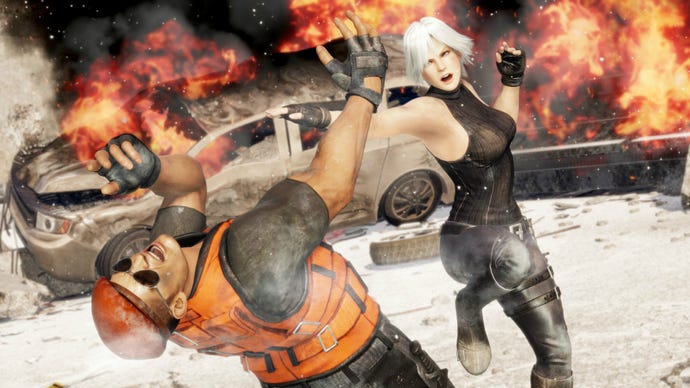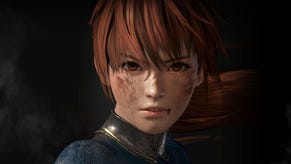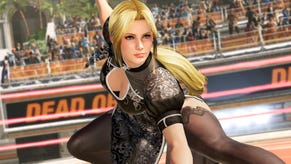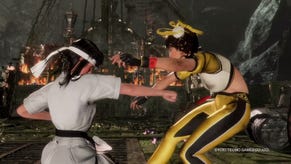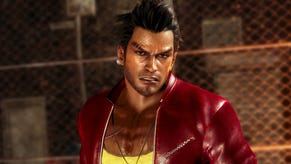Dead or Alive 6 Review
Koei Tecmo's fighter hides its true colors under a more presentable outfit.
This article first appeared on USgamer, a partner publication of VG247. Some content, such as this article, has been migrated to VG247 for posterity after USgamer's closure - but it has not been edited or further vetted by the VG247 team.
More than any other major fighter, Dead or Alive has always been known for its reliance on sexualized characters. There's more to the franchise than that, as Dead or Alive has relied on a fast and fluid combat system for every entry, but that's what comes to mind for most people when you say "Dead or Alive". The first game introduced jiggle physics, where the female characters breasts would shake around in unrealistic fashion. It was an addition aimed at making the Virtua Fighter clone stand out in a crowded market.
In the early days of USG, I reviewed Dead or Alive 5: Last Round, which was a solid fighting game surrounded by a deluge of downloadable content, mostly cute or revealing costumes. The review's first line—"My first fight in Dead or Alive 5: Last Round was against a female character wearing a bikini and high-heels."—summed up the game completely. Koei Tecmo was actually pushing the 400 available costumes, because that's where the money was. The publisher and developer Team Ninja wanted fans to know that the game was all about dressing up the fighters in "sexy" costumes. Dead or Alive 5: Last Round wasn't the kind of game you'd play around family.

Dead or Alive 6 is categorized by some restraint. Yes, jiggle physics are still around, but I didn't notice them most of the time, outside of the... "healthier" fighters like Honoka. Most of the default costumes for the cast are more reserved, showing a bit less skin unless it fit with the character, like Helena and Nyotengu. Yes, there are more risque outfits available, but Dead or Alive 6 isn't starting there, making its overall presentation a little better. It seems Koei Tecmo has learned that you don't have to lay all your cards on the table at the very beginning.
Dead or Alive 6 retains the simplicity of the previous games; it's not about the difficulty of executing the movesets, it's about knowing when to use which attack. Punch, Kick, Throw, and Hold are all available on your face buttons for easy access, with most moves being done by a button and a direction. Fighting games are really about the footsies, and Dead or Alive understands that, meaning the barrier to entry is much lower than some other command move fighters.
New to the Dead or Alive franchise is the Break system-a whole new Special button backed by the Break Gauge. Like Mortal Kombat's X-Ray moves, these hits push in with a cinematic camera so you can see the hit land on an opponent's face or gut. Push away from your opponent and the Special button does the Break Hold, which does an over-the-top counter move. This burns a section of your meter, whether you properly counter or not, os it's a toss-up between using it for a Hold or saving it. Finally, there's the Fatal Rush, which is a four-hit combo using the Special button; the first hit stuns, and if your gauge is full, the last hit is a Break Blow.

The Break Blow not only looks cool, but in the hands of an expert, it can be used to extend combos. Team Ninja also beefed up DOA 6 with a new side-step move, allowing players to evade attacks for those who are just button mashing. Other 3D fighters like Tekken have had side-steps for some time, but they add a new way to counter here. The ultimate result is that Dead or Alive 6 feels more accessible, but veteran players with an understanding of timing and counters will still prevail.
Graphically, Dead or Alive 6 is still mostly smooth, but the image quality isn't as good as its predecessors. It has two visual modes, prioritizing either graphics or frame rate; the former isn't entirely pristine, but the latter doesn't have a locked 60 fps. Honestly, it's hard to tell between the two at times. Team Ninja is usually about wringing the most out of high-spec platform, but Dead or Alive 6 on PlayStation 4 Pro has aliasing, frame rate drops, and a whole bunch of ghosting.
It's still doing a lot though, with vast stages full of electric fences, firecrackers, and onlookers who will literally push you back into the fight. Stage transitions, where you hit an opponent so hard that you move to a different arena, return here. There feels like there are fewer transitions overall than previous games, but the ones that are around lean on the more unique stages, like taking a pterodactyl ride or being thrown by a monstrous sea creature. Some of the stages could use a bump visually, as they occasionally have some drab or ugly textures; Lost Paradise and Road Rage are the two biggest culprits here.
DOA 6 has a full story mode, using in-game assets and voice acting to relate the shenanigans behind this version of the DOA Tournament. Like previous entries, the tournament might be the thing that bring everyone together, but the backstory is about ninjas, mysterious powers, and artificial humans. t. You jump back and forth across the story willy nilly, diving into character stories as they unlock, or at your leisure. And these scenes cover everything from bare-knuckle street fights, mysterious whispers of future doom, long-lost ninja comrades, an attempted dinosaur kidnapping, and a treasure hunt near a giant kraken. Dead or Alive 6's story makes no sense, but I admit it's a ton of fun.
The variety found in the story mode does give Team Ninja the chance to show off many of the character costumes. Yes, they're still around in Dead or Alive 6. As part of the aforementioned restraint, many of the default costumes are low-key: they may be form-fitting, but they aren't as "out there" as Dead or Alive can get. As an example, Zack wears a business suit for his default costume, while his second is his classic shirtless look. Honoka wears a school uniform by default, but you can unlock her short shorts and bikini combo if that's your poison. Costuming still leans heavily on the female characters, male characters tend to get two outfits, while female characters have access to five (each in three colors).
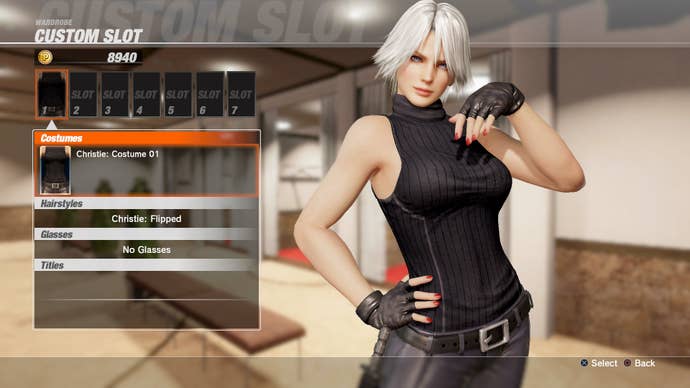
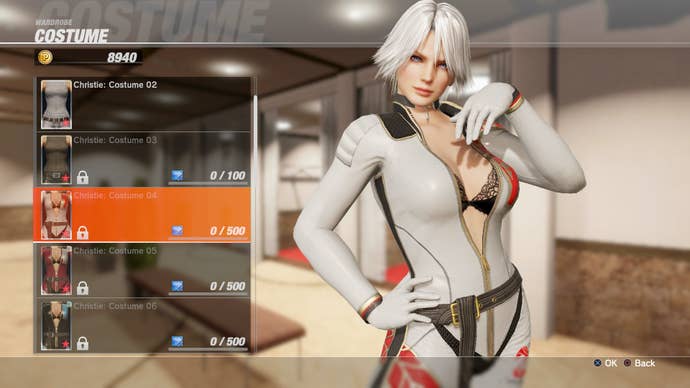
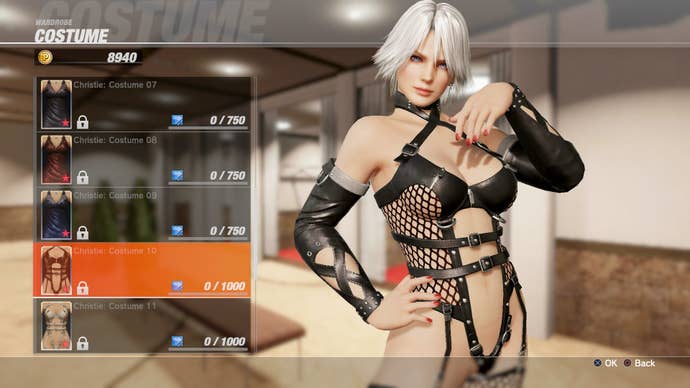
Access to all these costumes comes from Dead or Alive 6's various modes. DOA Quest is the game's standard mission mode. You gain Player Points for completing a mission, and bonus Points for finishing specific objectives within that mission. Finishing all of a mission's objective gives you costume pattern parts for a specific costume. It's a bit convoluted, but if you collect all of a costumes' pattern parts, then you can actually unlock the costume by purchasing it with Player Points. I wish the costume unlocks were a bit more targeted, as you earn pattern parts at random as you play, so while you might want say, Mila Costume 09, you may not get pattern parts to unlock it for purchase for quite a while. Otherwise, you can purchase character hairstyles and various glasses with Player Points immediately. Points are also awarded for doing Combo Challenges, Survival, Time Attack, Versus, and Online play. You play, you get Points.
This allows players to freely customize their favorite character, which reinforces part of what Dead or Alive has become in this modern era. Yes, the fighting is key, but showing off the costumes that you've unlocked (or purchased) is part of the special sauce here. You can save up to ten "loadouts" per character, each of which is a combination of costume, hairstyle, glasses, and title.
Speaking of characters, most of the primary roster returns from Dead or Alive 5, including series mainstays Kasumi, Hitomi, and Hayabusa. New fighters Hitomi, Marie Rose, and Raidou are back from Dead or Alive 5, and the only missing characters are odd omissions like Ein and Gen Fu, or previous guest characters like Rachel and Momiji. It's a solid roster, and none of it needs to be unlocked, outside of Nyotengu and Phase 4, who are pre-order and Digital Deluxe DLC respectively. Unlocking is all in the form of cosmetic gear.
The roster is split among a variety of fighting styles, from the lithe ninjas like Ayane or Hayate, characters who lean on steady, strong hits like Hitomi and Kokoro, and heavier brawlers like Bass and Raidou. A few of the characters allow for more freeform play, including the confusing many-angled attacks Brad Wong or Zack's quick mix-ups. There are two new characters filling out all the returning fighters. The first is NiCO, a young scientist who uses Pencak Silat and electricity as her weapons of choice: she's on the fast side and feels somewhat like Marie Rose. The other character is Diego, a Mexican-American street fighter who is built to keep the pressure on. I'm actually a fan of his rougher fighting style and faux hawk, especially when I'm taking it to folks online.
Online play went live late last night following a day one patch. Only Ranked Matches are available at the moment, so there's nothing for those who'd rather do more casual play or enjoy the game with friends. If I kept the connection quality option above 3+, I generally found solid online play. The default setting of "any" connection quality did land me in a few matches with noticeable lag. Beyond that, Dead or Alive 6's online feels sluggish overall in terms of input, a problem that carries over from the last game. It's playable, but not anywhere near the best of the modern fighting genre.

Dead or Alive 6 is a better experience overall than Dead or Alive 5: Last Round was for me back in 2015. The core simplicity of DOA's combat is the same, and Koei Tecmo and Team Ninja have filled the game to brim with all the modes players have come to expect from modern fighting game. And with a few presentation tweaks, it's trying to reach beyond that audience while still give it what it wants. Dead or Alive 6 doesn't have the huge cast of Super Smash Bros Ultimate, the impeccable story mode of Injustice 2, or the mechanical complexity of Dragon Ball FighterZ. It's doesn't need to though. Instead, it's an accessible fighter that understands its audience. That's good enough, as unless Virtua Fighter comes back, there aren't many fighters like DOA right now.
ConclusionDead or Alive 6 carries much of the franchise's risque DNA, but shows a bit more initial restraint. The more revealing costumes are unlockable and the jiggle physics tend towards a bit more realism now. Combat remains accessible, but new moves like the Break Blow and evasion add new layers for DOA vets. Dead or Alive 6 could use a little more graphical polish and its netcode needs to be better, but it's a pretty good fighter all around.
